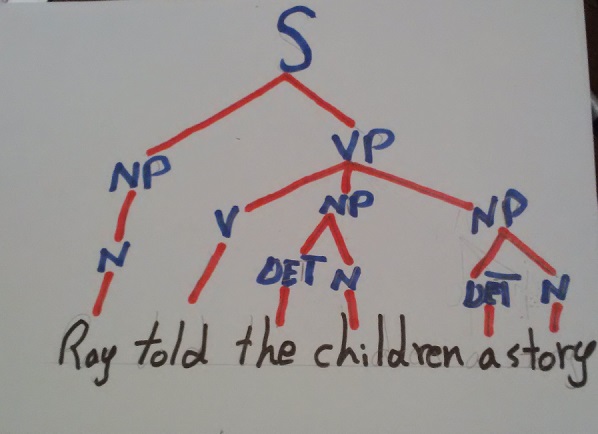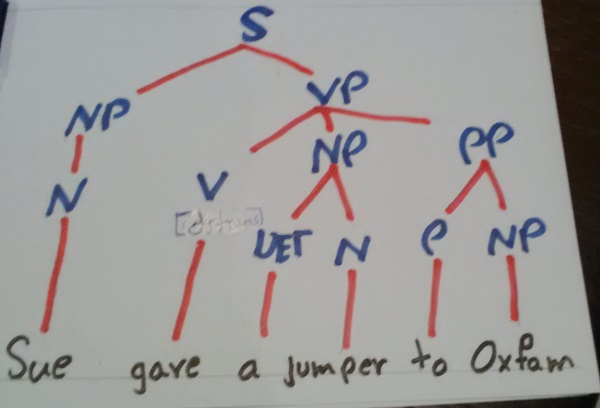DITRANSITIVE Verb
Another class of verb which occurs with an object is ditransitive. However, this type of verb, again as its name implies, two objects ['di' meaning 'two']. One of these is
familiar direct object the other an INDIRECT OBJECT or iOfor short. For example , in the sentence :
Ray told the children a story
The verb is followed by two noun phrase, the children and a story. In a sentence with structure it is the direct object of the verb told; in other words a story is what is being
told. The other noun phrase, the children is indirect object[iO]; in other words the children are recipients of the direct object , a story.
The tree diagram for this type of structure is:
And the function of the constituents :
Ray told the children a story
S---- p----- iO-------- DO
The verb gave is also a ditransitive verb . in the sentence :
Sue gave Oxfam a jumper
You can see that gave is followed by two noun phrase , Oxfom and a jumper. Again, the second noun phrase , a jumper is the direct object of the verb since that is what is being given and the first noun phrase Oxfam is indirect object the recipient of the direct object .
A verb phrase using a ditransitive verb is not really complete without both object ; they are obligatory , not optional.
There is another way of phrasing the indirect object
) Sue gave Oxfam a jumper
Can be phrased as :
) Sue gave a jumber to Oxfam
Similary:
) Ray told the children a story
Can also phrased as:
Ray told a story to the children
To , you will remember is a preposition and in these examples it has joined with the noun phrase Oxfam and the children to form prepositional phrase . so far we have only looked at prepositional phrases which function as adverbials. Here we are showing another function; that of indirect object. A constituent which functions as an indirect object then have either the form of an NP or the form of a PP
The tree for a ditransitive verb incorporating as PP is:
And the function of the constituent phrases is :
) Sue gave a jumper to Oxfam
S------ p -----do----- iO







 رد مع اقتباس
رد مع اقتباس